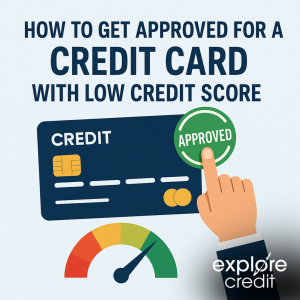When it comes to borrowing money, one of the most important choices you’ll make is between Short-Term vs Long-Term Loans. Each type serves different financial needs, repayment abilities, and goals. Understanding how they work can help you make smarter borrowing decisions and avoid unnecessary financial stress.
At Explore Credit, we make loan options simple and transparent. Whether you’re looking for a Short-Term Installment Loan or a longer repayment plan, here’s what you should know before applying.
1. What Are Short-Term Loans?
A Short-Term Loan is designed to help you cover immediate financial needs. These loans are typically repaid within a few months to a year.
• Ideal for urgent expenses such as car repairs, bills, or emergencies.
• Easier to qualify for, even with less-than-perfect credit.
• Often come with slightly higher interest rates due to quick repayment terms.
Short-Term Installment Loan: What It Is and How It Works — this loan allows you to borrow a fixed amount and repay it in regular installments over a short period. It helps build your credit history while providing quick financial relief.
2. What Are Long-Term Loans?
A Long-Term Loan stretches repayment over several years, making monthly payments smaller but extending the time you’ll pay interest.
• Great for big purchases like homes, vehicles, or education.
• Offers lower interest rates compared to short-term loans.
• Can improve your credit mix by showing responsible long-term repayment.
However, longer terms mean paying more interest over time, so it’s important to balance affordability with overall cost.
3. Choosing the Right Loan Term
The decision between Short-Term vs Long-Term Loans depends on your financial situation and goals. Here’s what to consider:
• Budget: Can you manage higher monthly payments for a shorter time, or do you need smaller payments over several years?
• Purpose: Is your loan for an emergency expense or a long-term investment?
• Credit Score: Shorter loans can help improve your score faster if repaid responsibly.
• Total Cost: Longer loans may seem easier but could cost more overall.
At Explore Credit, we guide borrowers to choose the right loan structure for their needs whether a Short-Term Installment Loan or a flexible long-term option.
4. Benefits of Flexible Loan Options
Today’s borrowers want flexibility, and lenders like Explore Credit make that possible.
• Choose repayment terms that fit your income schedule.
• Access funds quickly with transparent eligibility criteria.
• Repay early without penalties to save on interest.
Flexibility allows you to stay in control of your finances while achieving your goals confidently.
Final Thoughts
Understanding the difference between Short-Term vs Long-Term Loans can save you time, stress, and money. If you need quick funds, a Short-Term Installment Loan may be your best option. But if you’re planning for larger financial goals, a long-term plan might offer more comfort.
Whichever you choose, Explore Credit makes borrowing simple, fast, and secure — empowering you to meet your financial needs with confidence. Apply today and discover the loan that fits your lifestyle best.
Short-Term vs Long-Term Loans, Short-Term Installment Loan: What It Is and How It Works, Choosing the Right Loan Term, Benefits of Flexible Loan Options



